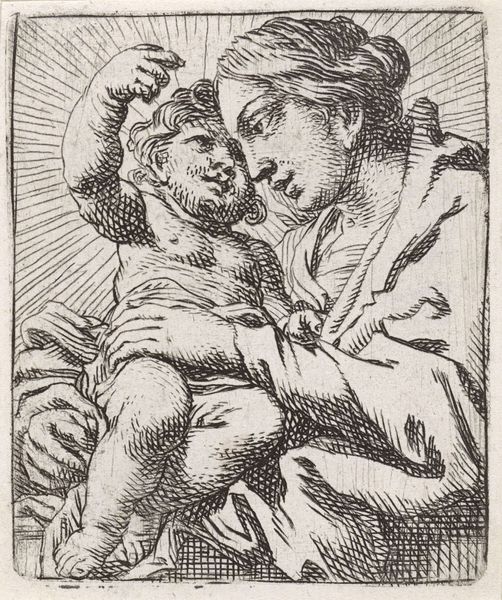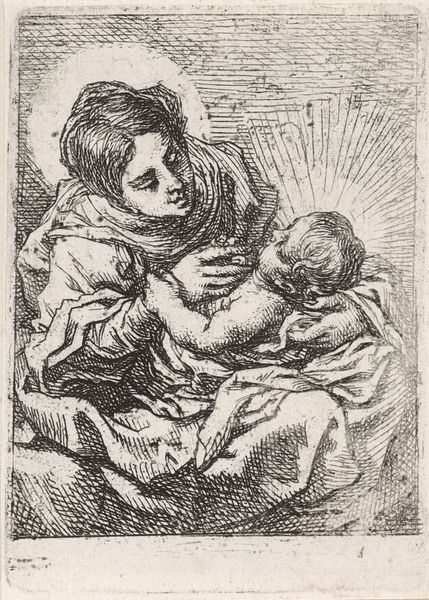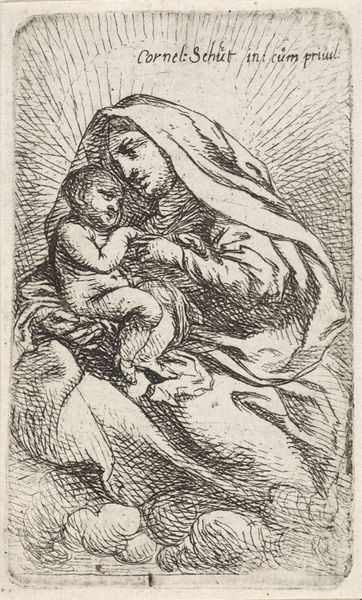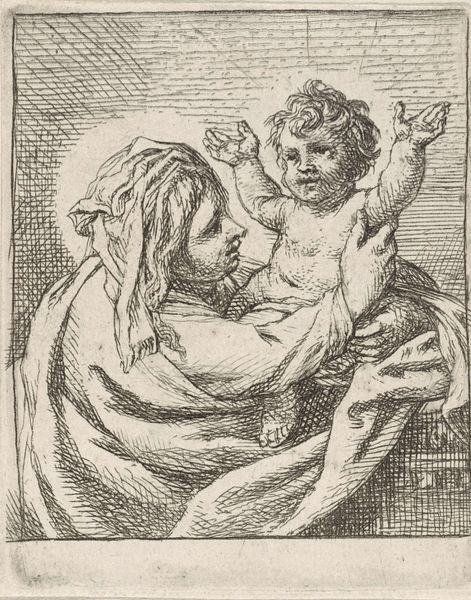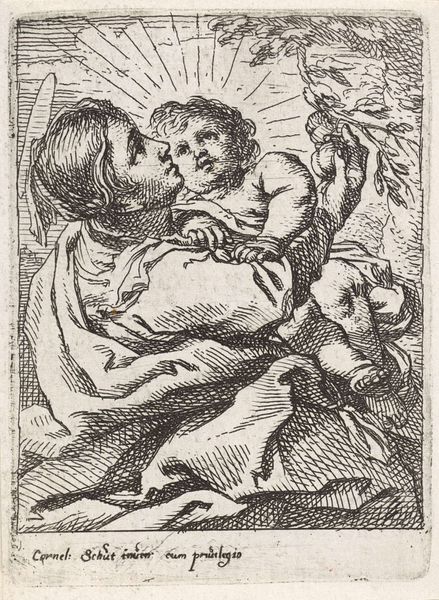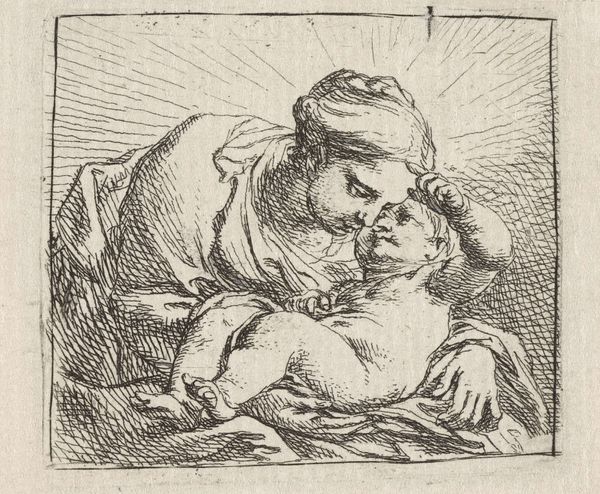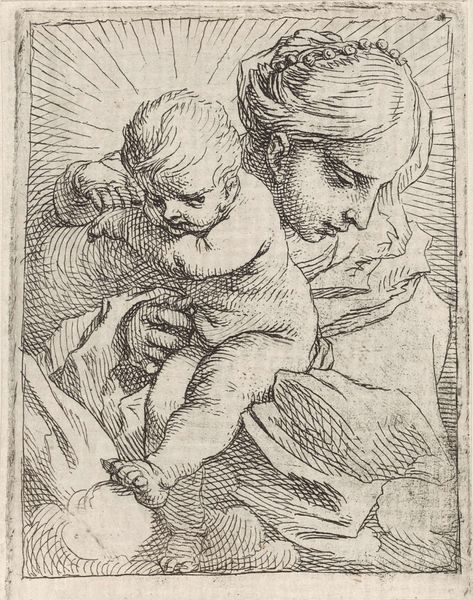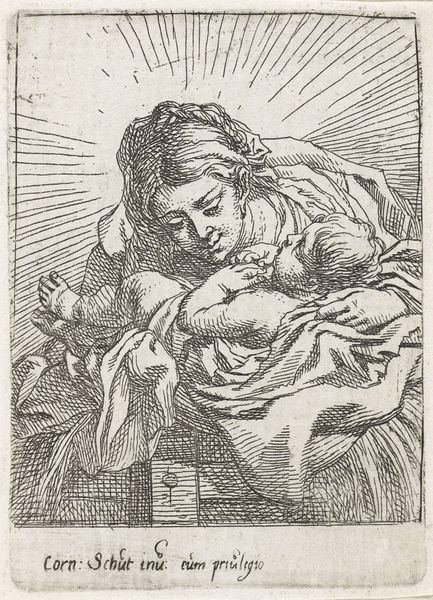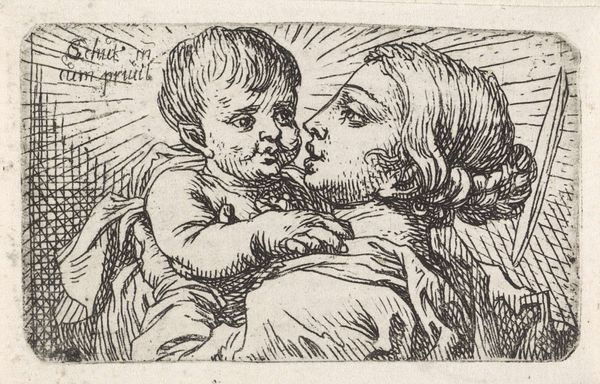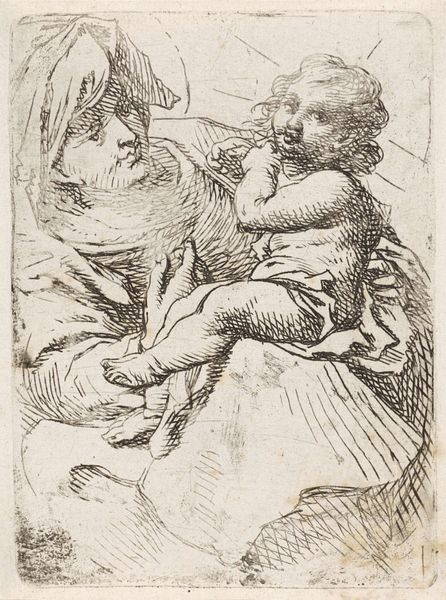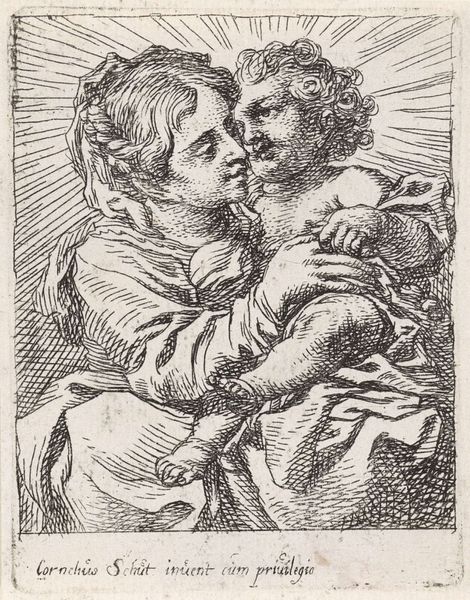
drawing, ink
#
portrait
#
drawing
#
baroque
#
figuration
#
ink
#
line
Dimensions: height 67 mm, width 61 mm
Copyright: Rijks Museum: Open Domain
Curator: Standing before us is "Madonna met kind" by Cornelis Schut, an ink drawing dating from 1618 to 1655. It's part of the Rijksmuseum collection. Editor: The texture! Even from a distance, I'm struck by the raw, almost visceral quality of the lines. It’s very tactile, considering the subject matter. Curator: Precisely. This image offers us a poignant glimpse into the prevailing social norms and power structures embedded in religious representation of motherhood during the Baroque era. Think about the significance of Mary, not just as a mother, but as a vessel through which divine power is channeled. Editor: It is compelling, and certainly defies typical idealizations. Schut's mark-making creates this fascinating tension between the sacred and the earthy, or, you could say the divine and quotidian aspects of early 17th century material conditions and spiritual beliefs. It also highlights the handmade quality, revealing the artist's labor directly. Curator: Note how the radiating lines from behind them create an almost tangible aura, imbuing the subjects with an ethereal quality, even though their forms appear quite grounded. This contrast reminds me of the debates surrounding female agency at the time. Is she divinely chosen or subject to socio-political forces? Editor: Interesting. For me the stark contrast serves a different purpose; the material reality and even the commodity status of religious iconography comes to mind when viewing it with my particular interests. The repetitive lines feel mechanical in a way; consider the labor invested in reproducing this image and circulating it. Curator: Absolutely, thinking about reproduction provides important insights to devotional life. And while Schut uses the traditional subject, he subtly invites questions concerning gender and the construction of maternal holiness. It pushes viewers to analyze social conditions which is rare for art produced at the time. Editor: Agreed. Viewing the ink not just as a tool for representation but as evidence of work makes you question the value of skilled artistic practice and the purpose and conditions around its consumption in Baroque society. I also keep thinking about that roughhewn, unidealized feeling, even though it certainly embodies certain aspects of the Baroque. It's fascinating, almost as though there's an intentional contradiction embedded within it. Curator: These critical layers are a reminder that art engages with not only a devotional practice but also the identity and the social and cultural implications related to religion. Editor: Well said. This little drawing provides such fertile ground for discussing labor, materiality, and faith. It makes me want to look at his other works, considering similar elements!
Comments
No comments
Be the first to comment and join the conversation on the ultimate creative platform.
